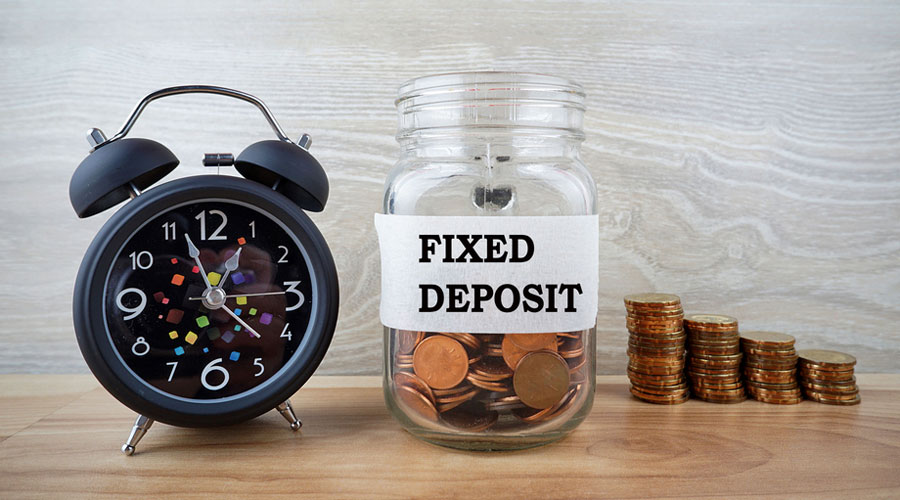Returns from fixed deposits have dipped sharply this year. A look at data from December 2019 shows that FD interest rates of large banks stood in the 6-6.75 per cent range. This includes both private and government banks. A year later, the same banks now provide returns in the range of 4.8-5.50 per cent. This dip, along with the spike in inflation, would hurt those who prefer assured returns from bank deposits — for example, senior citizens who prefer to not take market risks with their retirement corpus. Let’s look at ways to get better returns from fixed income instruments.
Diversify your options
For those above the age of 60, FD interest up to Rs 50,000 earned in a year is tax-free. But for those under 60, fixed deposits provide low returns and no tax efficiency. They are best suited for safe-keeping funds for short periods and, therefore, ill-equipped for long-term investing.
For example, a 6 per cent FD returns only 4.2 per cent if you’re in the 30 per cent tax slab. Therefore, it’s important to separate savings from long-term investments in order to earn higher returns critical to wealth creation at an optimal rate.
For instance, the current return on the Public Provident Fund is 7.1 per cent tax-free. Whether you’re over or under 60, you must separate savings from investments, and diversify your options to earn higher returns.
Stick to stable banks
Recently, the Reserve Bank of India put some banks under moratorium. In this scenario, the safety of capital is as much a concern as the return on capital. Therefore, first and foremost, you must ensure that your bank is not experiencing corporate governance issues, and it has acceptable levels of non-performing assets.
The banks put under moratorium were struggling on both counts. If your bank is stable and compliant, it would be advisable to hold your deposits there for the short term without worrying that the interest rates are low. For example, you may need to pay for your child’s college fees in a year, and therefore it’s important that you get the money back safely even if you’re earning just 4 per cent a year on the deposit.
Ladder your deposits
Laddering is a technique with which you make deposits of diverse tenures, thus creating an investment loop wherein some FDs mature periodically and can be reinvested at higher interest rates prevalent at the time.
For example, assume that you have Rs 10 lakh in a single deposit earning 5 per cent interest. You could break this up into five FDs maturing in one, two, three, four and five years. Therefore, each year, you’ll have one deposit maturing, which will help you with your liquidity needs at those points in time.
Alternatively, you could reinvest the maturity proceeds in order to get higher returns. This will help you get better average returns from your deposits instead of being locked in a single deposit offering a flat rate of return.
Check corporate deposits
Corporate deposits are essentially debts to companies, both private and public. Cumulative or non-cumulative deposits can be availed with companies that invite them. As safety of capital is paramount, it would be advisable to entrust only those companies with high credit ratings.
The highest credit rating is AAA, implying the highest degree of capital safety along with timely return of your principal and interest. Laddering and diversification remain key. Therefore, take limited exposure with AAA-rated companies to get higher returns on a part of your deposits. Corporate FDs normally offer a slightly higher rate of return compared with bank FDs of similar tenures. At present, a few AAA-rated FDs offer upwards of 6.50 per cent on select tenures — around 100 basis points higher than what many large banks offer today.
Can consider smaller banks
Smaller banks attract new depositors with higher interest rates. For instance, some small finance banks are currently offering interest rates of up to 7.50 per cent on select FD tenures. You may consider them for better average returns on your deposits. However, the checks and balances still need to be applied. Do examine the bank’s financial health and understand any risk it may pose to your deposits. Limit your exposure in order to curb those risks.
Try government schemes
If your need is safety of capital and guaranteed returns, and you can put this money away for the long term, you must consider the various government-backed schemes available to you.
The PPF, for example, gives you handsome tax-free returns along with tax deductions under Section 80C — assuming you can put the money away for 15 years. Similarly, the Senior Citizen Savings Scheme and Sukanya Samriddhi Scheme are good choices for eligible, risk-averse long-term investors.
Availing yourselves these schemes would allow you to get higher returns on funds you don’t need for your immediate use.
Diversification, laddering, and optimising risk for rewards are key to earning higher returns which will help your money grow faster and protect you against rising inflation.
The writer is CEO of BankBazaar.com










